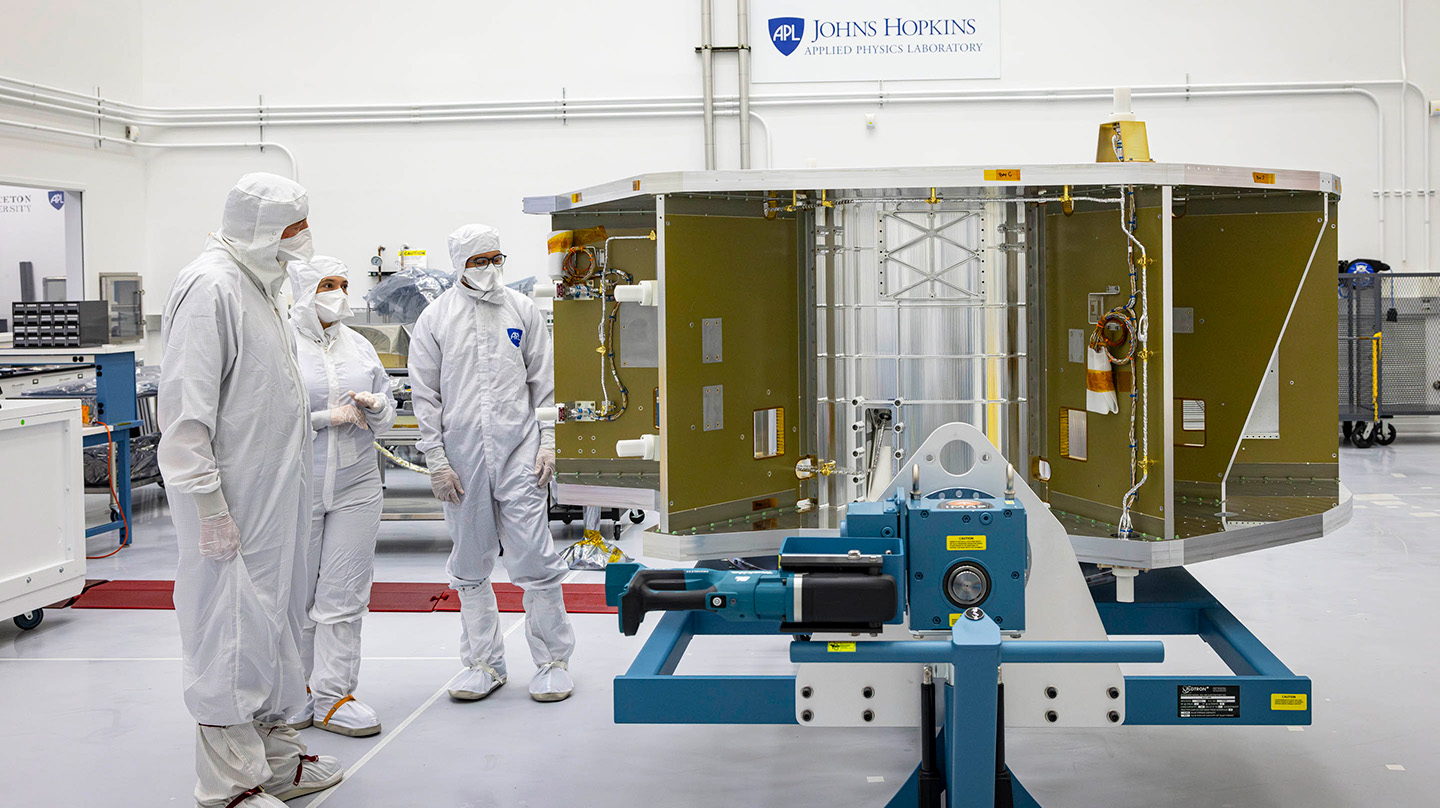News
IMAP Mission Begins Integration and Testing at Johns Hopkins APL — Public Invited to Follow Along With Livestream
NASA’s Interstellar Mapping and Acceleration Probe (IMAP) is embarking on its yearlong integration and testing campaign, during which all of the instruments and components will be added to the spacecraft structure, tested to ensure they will survive the harsh environments of launch and space, and made ready to execute their mission.
On Sept. 19, the spacecraft returned to the Johns Hopkins Applied Physics Laboratory (APL) in Laurel, Maryland, after a trip to Aerojet Rocketdyne, where the propulsion system was added. The spacecraft was then transported to NASA’s Goddard Space Flight Center in Greenbelt, Maryland, where it underwent thermal testing.
“We are thrilled to have the spacecraft back at APL and to embark on the main elements of the system build,” said John Scherrer, the program manager for IMAP at APL. “The next several months will be very exciting as we see the IMAP spacecraft come together.”
The IMAP mission, which will be ready to launch in 2025, will explore our solar neighborhood, decoding the messages in particles from the Sun and beyond our cosmic shield. The mission will map the boundaries of the heliosphere — the electromagnetic bubble surrounding the Sun and planets that is inflated by the solar wind. As a modern-day celestial cartographer, IMAP will also explore and chart the vast range of particles in interplanetary space, helping to investigate two of the most important overarching issues in heliophysics: the energization of charged particles from the Sun and the interaction of the solar wind at its boundary with interstellar space.
Princeton University professor and principal investigator David J. McComas leads the mission with an international team of more than 25 partner institutions. APL is managing the development phase and building the spacecraft and will operate the mission. IMAP is the fifth mission in NASA’s Solar Terrestrial Probes (STP) Program portfolio. The Explorers and Heliophysics Projects Division at Goddard Space Flight Center manages the STP Program for the agency’s Heliophysics Division of NASA’s Science Mission Directorate.
“I am very proud of our entire team, who have come together from 25 institutions around the world to find creative solutions, solve challenging problems and get us to this point,” said McComas. “That teamwork will continue to be needed in the coming months to ensure the components of the mission are integrated and tested successfully.”
The public can watch alongside APL and other team member experts working on IMAP. A YouTube livestream of the clean room, where the spacecraft will be built and tested over the next year, is now available to watch at any time on the IMAP mission website. Viewers can watch the continuous stream to see exactly how the team takes IMAP from a bare-bones structure to the complex, fully operational IMAP spacecraft.
Over the next several months, IMAP’s 10 instruments will arrive at APL from all over the world and be integrated into the spacecraft structure one by one. Once all the instruments and the spacecraft’s various other subsystems and components are integrated, the IMAP team will begin a rigorous testing campaign. Finally, the spacecraft will be shipped back to Goddard to finish testing before launch.
“In the near future, IMAP will help provide important insights into the Sun’s heliosphere,” said Patrick Koehn, IMAP program scientist at NASA Headquarters. “Now, however, we have a unique opportunity to see the work it takes to prepare the spacecraft to make those observations, advancing our understanding of the solar system we live in.”
